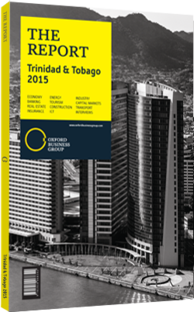Quality over quantity is being pursued as the key to success for Trinidad and Tobago's cocoa industry
Cocoa, along with honey, was designated as a strategic crop by the National Food Production Action Plan 2012-15 due to its “natural advantage and great potential”. Trinidad and Tobago is no stranger to the strategic importance of the cocoa bean. As far back as 1830, it was the third-largest producer of cocoa in the world, accounting for 20% of total global production.
However, local production peaked in 1921 at 34,000 tonnes, followed by several decades of decline due to a combination of factors, including a glut in the global cocoa market, the Great Depression, the emergence of Witches’ Broom disease in T&T and labour competition from the country’s emerging oil industry. From 1969 to 1986 the land area dedicated to cocoa fell from 46,000 ha to 20,000 ha. By 2011, just 600 tonnes of fine or flavour cocoa, or around 2% of global supply, was produced on 7000 ha. The segment also remains vulnerable to weather fluctuations. Dwindling labour and unfavourable weather conditions in the six months to March 2014 saw production fall by over 60% to 131.4 tonnes, down from 335.7 tonnes one year earlier.
Advantages
Despite this decline, T&T has two distinct advantages in cocoa production, one comparative and one competitive. The comparative one is the type of cocoa trees that populate its twin islands, known as Trinitario – a hybrid of the Criollo and Forastero trees and by-product of cultivation by the Spanish in the 1500s. These trees yield a highly sought-after type of cocoa, labelled as fine or flavour. Thanks to its distinctive taste and application in specialty products, this type of cocoa fetches about 2.5 times more per tonne than its bulk cocoa counterpart, which dominates output from West Africa. Indeed, the reputation of Trinbagonian chocolate is a sector asset, especially given the recent proliferation of clones like CCN-51, a disease-resistant varietal from Ecuador that is fast taking over mass-market chocolate, to the chagrin of connoisseurs willing to pay top dollar for T&T’s heirloom cocoa.
In terms of competitive advantage, T&T has developed industry-leading cocoa research capabilities. Since 1930 the Cocoa Research Centre (CRC), originally established by the Imperial College of Tropical Agriculture and then incorporated under the University of West Indies (UWI), has been a world leader in research into all aspects of cocoa. Conservation is central to its work, with the CRC acting as the custodian of the International Cocoa Genebank, Trinidad (ICG, T). The ICG, T includes 16 specimens of each of the 2400 known varieties, some of which stem from expeditions in South America in the 1930s.
Regulations & Research
Most of CRC’s research is commissioned by the leading commercial chocolate producers, which often seek innovative solutions to regulatory developments, such as the impending EU regulations that will limit the cadmium content of foodstuffs starting in 2017. These regulations are particularly troublesome for the chocolate industry, as cocoa trees grow best in volcanic soil, which has high levels of cadmium. Pathmanathan Umaharan, geneticist and director of the CRC, told OBG that two possible solutions are being pursued. One strategy is to identify suitable ameliorants that can be added to the soil, while the other proposed solution is to identify varieties whose root systems that have reduced levels of bioaccumulation of cadmium and then graft the branches of high-yielding varieties onto cadmium-resistant roots.
It Pays to Network
Thanks to its research connection with international chocolatiers, the CRC is able to work with local cocoa farmers to enhance their integration with global players and help ensure higher profitability. Whereas these small-scale farmers typically receive about 5% of the total value of the finished product, direct contact will enable them to sell high-quality cocoa directly to leading manufacturers.
With demand for chocolate rising steadily in emerging markets like China, the International Cocoa Organisation is projecting a global deficit of 1m tonnes by 2020. This positions T&T well for growth both in terms of offering innovative solutions to industry giants and supplying niche cocoa to more discerning consumers.
You have reached the limit of premium articles you can view for free.
Choose from the options below to purchase print or digital editions of our Reports. You can also purchase a website subscription giving you unlimited access to all of our Reports online for 12 months.
If you have already purchased this Report or have a website subscription, please login to continue.

